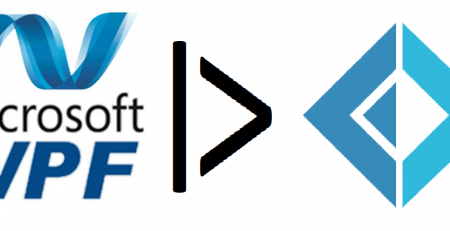RESTful vs. RPC: Comparing Two Distinct API Architectural Approaches
Developers have a wide range of architectural styles to pick from when it comes to creating and implementing APIs. Representational State Transfer (REST) and Remote Procedure Call (RPC) are two popular choices. Both strategies have their own advantages, disadvantages, and applications. With the use of practical C# code samples, we will examine the distinctions between RESTful and RPC APIs in this blog article.
Understanding RESTful APIs
Representational State Transfer, or RESTful, is an architectural design approach that prioritizes a stateless client-server communication architecture. Resources serve as its central focus; these are recognized by URLs and managed using common HTTP operations (GET, POST, PUT, DELETE, etc.). Scalable, straightforward, and loosely connected are the goals of RESTful API architecture.
C# Example: Creating a RESTful API Endpoint
Let’s consider a scenario where we’re building a simple task management system using C# and ASP.NET Core. We’ll create a RESTful API endpoint to retrieve a list of tasks:
[ApiController]
[Route("api/tasks")]
public class TasksController : ControllerBase
{
private readonly List<Task> _tasks = new List<Task>
{
new Task { Id = 1, Title = "Complete Blog Post", Done = false },
new Task { Id = 2, Title = "Prepare Presentation", Done = true }
};
[HttpGet]
public IActionResult GetTasks()
{
return Ok(_tasks);
}
}In this example, we use the HTTP GET method to retrieve a list of tasks from the “/api/tasks” endpoint. The resource (tasks) is represented by the URL, and the HTTP method reflects the action (retrieve). This aligns with the principles of a RESTful API.
Exploring RPC APIs
Remote Procedure Call (RPC) is another architectural style that focuses on invoking methods or procedures on a remote server as if they were local. RPC APIs are typically used when there’s a need for tight coupling between the client and server, often in scenarios where performance and efficiency are crucial.
C# Example: Implementing an RPC API
Let’s continue with our task management system, but this time, we’ll implement an RPC-style API to mark a task as done:
public interface ITaskService
{
void MarkTaskAsDone(int taskId);
}
public class TaskService : ITaskService
{
private readonly List<Task> _tasks;
public TaskService(List<Task> tasks)
{
_tasks = tasks;
}
public void MarkTaskAsDone(int taskId)
{
var task = _tasks.FirstOrDefault(t => t.Id == taskId);
if (task != null)
{
task.Done = true;
}
}
}
// In the controller
[ApiController]
[Route("rpc/tasks")]
public class RpcTasksController : ControllerBase
{
private readonly ITaskService _taskService;
public RpcTasksController(ITaskService taskService)
{
_taskService = taskService;
}
[HttpPost("mark-as-done/{taskId}")]
public IActionResult MarkTaskAsDone(int taskId)
{
_taskService.MarkTaskAsDone(taskId);
return Ok();
}
}In this example, we define an RPC-style API for marking tasks as done. The client invokes the method “MarkTaskAsDone” on the server by making a POST request to the “/rpc/tasks/mark-as-done/{taskId}” endpoint.
Comparing RESTful and RPC APIs
Now that we’ve explored both RESTful and RPC API styles, let’s compare them based on various factors:
- Coupling and Abstraction: RESTful APIs encourage loose coupling and emphasize resource-oriented design. RPC APIs can lead to tighter coupling due to the direct invocation of remote methods.
- HTTP Methods: RESTful APIs utilize standard HTTP methods for different actions on resources. RPC APIs usually rely on a few HTTP methods (often POST) for various actions.
- Statelessness: RESTful APIs are inherently stateless, which simplifies scalability. RPC APIs might require server-side state to manage ongoing method calls.
- Visibility: RESTful APIs are more discoverable and self-documenting due to standardized HTTP methods and resource-based URLs. RPC APIs might require additional documentation to understand available methods.
- Use Cases: RESTful APIs are great for building scalable, distributed systems with loose coupling. RPC APIs are suitable when performance optimization and direct method invocation are critical.
Conclusion
Both RESTful and RPC methodologies offer benefits and are ideally suited for specific scenarios within the realm of API architectural styles. While RPC APIs prioritize performance and direct method invocation, RESTful APIs emphasize simplicity, scalability, and loose coupling. It’s essential to consider the requirements of your project when selecting an API design approach that aligns with your goals.
Remember that the capabilities of RESTful and RPC APIs extend far beyond the scope demonstrated in these instances. A comprehensive understanding of their differences and advantages will empower you to make an informed decision regarding the most appropriate strategy for your unique use case.











Leave a Reply